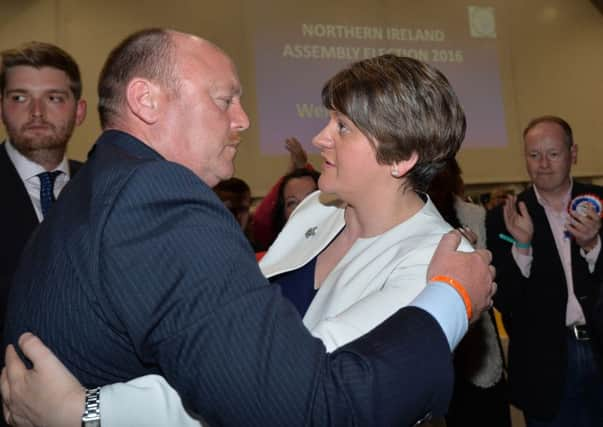Counting resumes in seven constituencies


After the last declaration on the first day of counting, 81 of the 108 seats were filled, with the DUP and Sinn Fein on course to retain their position as the major parties in the power-sharing coalition administration at Stormont.
Both parties may even return with exactly the same number of seats they went in to the Assembly election with.
Advertisement
Hide AdAdvertisement
Hide AdThe DUP is on course to replicate the 38 wins of 2011, and Sinn Fein is again poised to secure the 29 it achieved five years ago.
While one or two results might still prevent that exact scenario playing out, it will still be essentially “as you were” for the region’s largest parties in the next Assembly.
As counting on day one finished, with declarations in east Belfast around 3.30am, the DUP had 33 seats, Sinn Fein had 19, the Ulster Unionists had 10, the SDLP nine, Alliance six, People Before Profit Alliance two, and Traditional Unionist Voice and the Green Party one each.
DUP supporters were delighted with the performance, as even some party strategists had predicted a decrease on what was widely considered a high water mark in 2011.
Advertisement
Hide AdAdvertisement
Hide AdSinn Fein had wanted to secure the 30 seats that would have handed it the electoral strength to veto Assembly legislation using the much maligned “petition of concern” voting mechanism.
The smaller parties who filled seats in the coalition executive in the last term - the SDLP, Ulster Unionists and Alliance - failed to mount a significant challenge to the hegemony of the major government partners.
The SDLP was facing the prospect of losing a number of seats, while the UUP also had a disappointing election and was left with only one Assembly representative in the whole of Belfast.
Both parties may even return with exactly the same number of seats they went in to the Assembly election with.
Advertisement
Hide AdAdvertisement
Hide AdThe DUP is on course to replicate the 38 wins of 2011, and Sinn Fein is again poised to secure the 29 it achieved five years ago.
While one or two results might still prevent that exact scenario playing out, it will still be essentially “as you were” for the region’s largest parties in the next Assembly.
As counting on day one finished, with declarations in east Belfast around 3.30am, the DUP had 33 seats, Sinn Fein had 19, the Ulster Unionists had 10, the SDLP nine, Alliance six, People Before Profit Alliance two, and Traditional Unionist Voice and the Green Party one each.
DUP supporters were delighted with the performance, as even some party strategists had predicted a decrease on what was widely considered a high water mark in 2011.
Advertisement
Hide AdAdvertisement
Hide AdSinn Fein had wanted to secure the 30 seats that would have handed it the electoral strength to veto Assembly legislation using the much maligned “petition of concern” voting mechanism.
The smaller parties who filled seats in the coalition executive in the last term - the SDLP, Ulster Unionists and Alliance - failed to mount a significant challenge to the hegemony of the major government partners.
The SDLP was facing the prospect of losing a number of seats, while the UUP also had a disappointing election and was left with only one Assembly representative in the whole of Belfast.